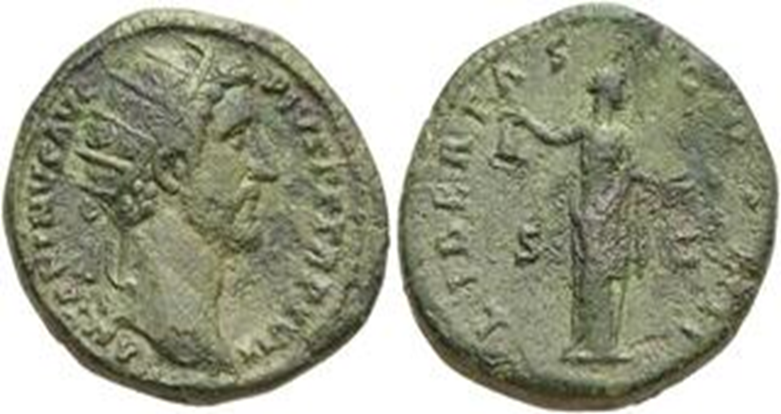Essaouira - the discovery of a Roman bronze coin re-reading the relationship of the Ahhan tribes with the Roman trade before Islam

It is known that the ancient kingdom of Ahhan linked commercial relations with the island of Essaouira, which was ruled by the Amazigh king Yuba II, as the island occupied a legal position in the production and industry of dyeing purple, and exporting it to the cities of the Roman world, where this material is extracted from seashells, and used in coloring fabrics
King Yuba II then ordered the establishment of centers for its production on the island of Mogador and the Canary Islands, and historical sources indicate that the commercial dealings in barter between the Ahhan tribes and the Phoenicians by lighting a fire as a sign of communication to start trade exchange, and were enriched by archaeological excavations on the island, whose archaeological finds are located in the Sidi Muhammad bin Abd allah is under the supervision of the Delegation of Culture. King Yuba II is credited with linking the Amazigh tribes to the Roman world at the level of commercial relations.

This discovered coin is archaeological evidence and an important indicator, and it will be the beginning of thinking about the completion of archaeological excavations in the event that its discovery sites are identified, and it will re-read the ancient history of the region and its contributions to commercial relations with the ancient Roman world, according to Huda Al-Aboudi, who specializes in the history of monetary currencies. Contact with her through colleague Professor Mahfouz Asmahari that the bronze coin discovered in Bahahan was issued during the reign of the Roman Emperor Antoine Lubio (138-161 AD), and the image in this coin is of the emperor's face, and the phrase (ANTONINUS AUG TR P XXIIII) was written on it, according to Wikipedia. His peaceful rule was marked by the flourishing of arts, literature, commerce, and architecture, encouraged and patronized by him.
This discovery will be a building block for the importance of the Amazigh dimension of the city of Essaouira in light of the cultural dynamism that it is witnessing recently. Considering the ancient history of the province of Essaouira and making such discoveries a basic building block for cultural reconciliation with the Amazigh history of the city and its tribal surroundings, despite attempts to obliterate its Amazigh identity for security considerations that have transcended time.

In conclusion, I highly appreciate the visit of the President of UNESCO, Adri Azoulay, accompanied by His Majesty's advisor, Mr. Andre Azoulay, during the past years, to the Bizmaouen Cave, the site of the discovery of the oldest jewelry in the history of Morocco. The cultural and civilizational diversity of the capital of Juba II, known in the ancient world for the quality of its industry for dyeing purple.
Mohamed Abihi - Professor of Contemporary History / Mohammed V University, Rabat.
Source : websites

